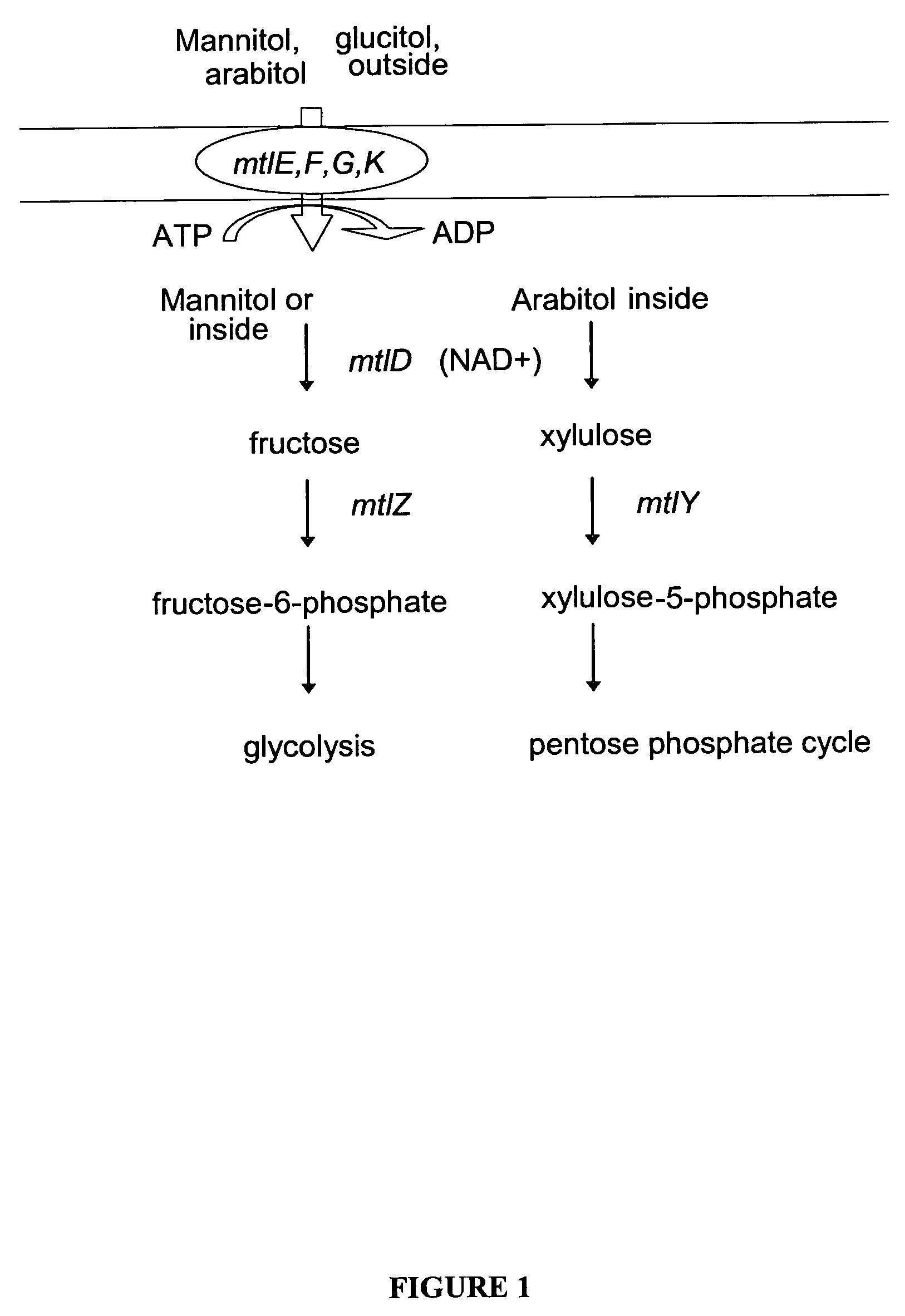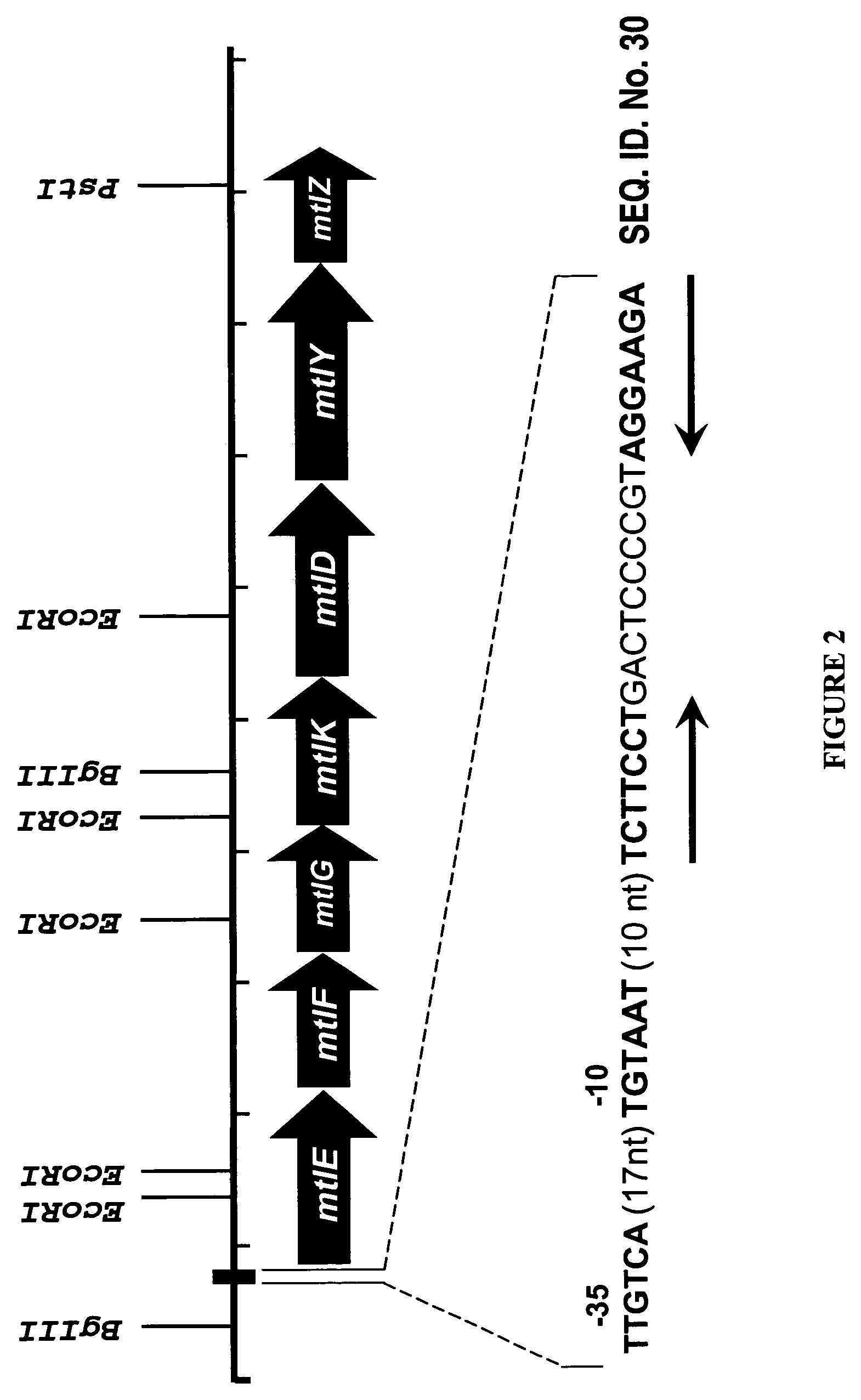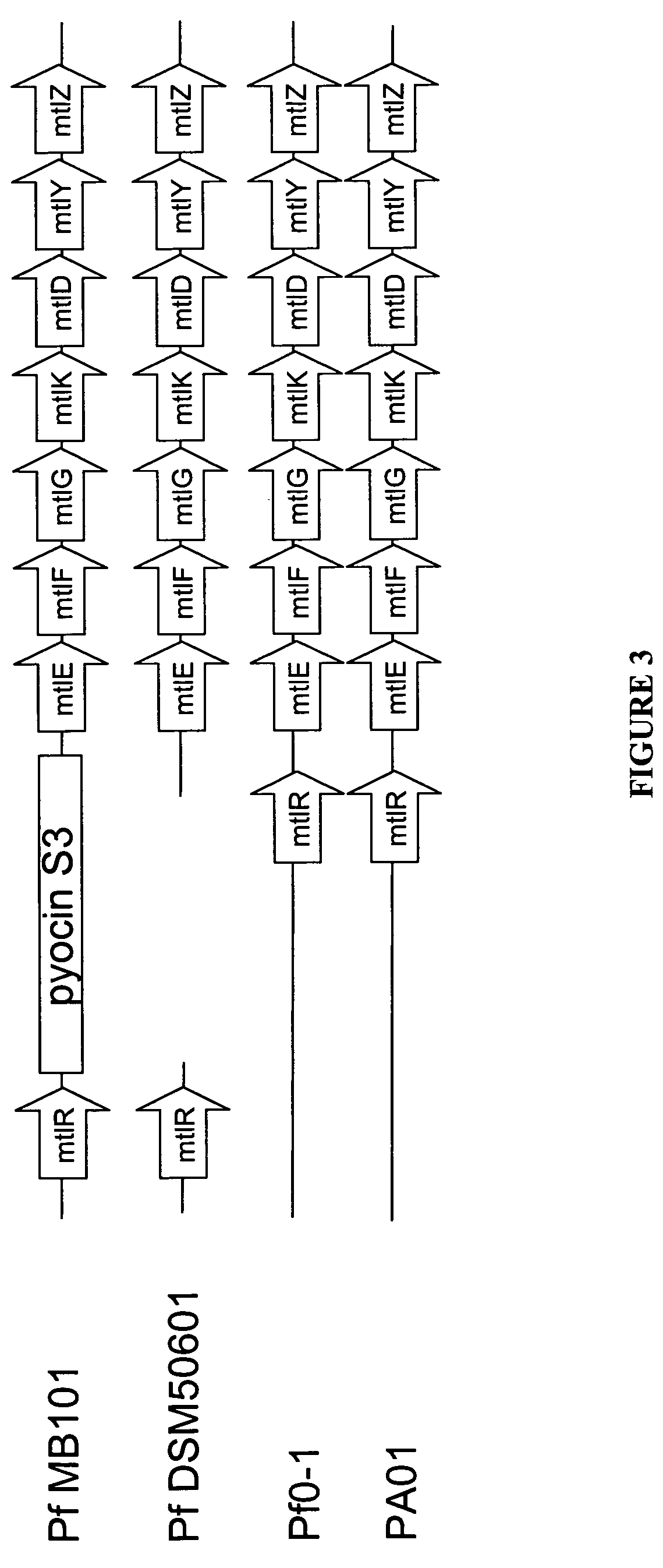Mannitol induced promoter systems in bacterial host cells
a promoter system and mannitol technology, applied in the field of recombinant peptide production, can solve the problems of inefficient and low level production of target polypeptides, iptg is expensive and must be carefully controlled, and toxicity risks, so as to achieve continuous and stable induction levels
- Summary
- Abstract
- Description
- Claims
- Application Information
AI Technical Summary
Benefits of technology
Problems solved by technology
Method used
Image
Examples
example 1
Identification of the mtl Operon in Various Pseudomonads
[0162]A BLAST search of the P. fluorescens MB 101 genome in the ERGO database, using the DSM50106 mtlE sequence as described by Brunker et al. (1998) “Structure and function of the genes involved in mannitol, arabitol, and glucitol utilization from Pseudomonas fluorescens DSM50106,” Gene 206(1):117-126, showed that MB11 has an mtl operon that is similar to the one described in DSM50106, starting with RXF01195 (mtlE). A gene alignment of the mtl operon in four different Pseudomonas strains, P. aeruginosa PAO-1, P. fluorescens DSM50106, P. fluorescens Pf0-1, and P. fluorescens MB101, is shown in FIG. 3. There are two types of gene arrangement—one where the transcriptional activator gene, mtlR, is located directly upstream of the mtl operon, and one where mtlR is not present directly upstream of the mtl operon, which is the case for MB101 and DSM50106.
[0163]A sequence alignment between the regions directly upstream of the mtlE ATG...
example 2
Cloning of the Promoter Region for the mtl Operon
[0164]A 299 bp region upstream of the MB101 mtlE gene (Seq.ID.No. 9, Table 3) was amplified by PCR using primers mtlE3 (5′-ATATGAGCTCGAGCGTGGGAACGATCAAGTGT-3′—SEQ. ID. No. 14) and mtlE4 (5′-ATATCCGCGGTTCCGCGCCCAGAGGGCTAC-3′—SEQ. ID. No. 15), (see Table 8) and cloned in front of the CopGFP reporter gene to make pDOW1365-1 (FIG. 5). The cloned region contains all of the sequences that are conserved between DSM50106 and MB101 as well as sequences farther upstream. Two pDOW1365-1 clones were sequenced; one (pDOW1365-1) had the same sequence as the genome reference (sequenced by The Dow Chemical Company), whereas the other had fourteen differences between the clone and the reference sequence. Since this large number of changes is unlikely to result solely from the error-prone PCR amplification process, we speculate that the DNA polymerase apparently switched templates among the four and a half direct repeats in the upstream region between ...
example 3
Mannitol Induction
[0172]Experiments to examine mannitol induction were performed in Pseudomonas fluorescens strain DC283, a uracil and proline auxotrophic mutant of P. fluorescens MB101. See, for example, J C Schneider et al. (2005) “Auxotrophic markers pyrF and proC can replace antibiotic markers on protein production plasmids in high cell density Pseudomonas fluorescens fermentation,” Biotech Prog 21:343. Growth experiments with strain DC283 / pDOW1365-1 were initially conducted in standard shake flask medium containing 9.5% glycerol. After cultivation of the cells for about 24 hours, 1% mannitol (55 mM) was added to induce expression of CopGFP, which was followed over time by measuring the fluorescence of the culture. Interestingly, the cells showed a high degree of fluorescence before induction with mannitol, and cell fluorescence did not increase after induction (FIG. 7). Further experiments revealed that the fluorescence level before induction and the inducibility of the mannito...
PUM
 Login to View More
Login to View More Abstract
Description
Claims
Application Information
 Login to View More
Login to View More - R&D
- Intellectual Property
- Life Sciences
- Materials
- Tech Scout
- Unparalleled Data Quality
- Higher Quality Content
- 60% Fewer Hallucinations
Browse by: Latest US Patents, China's latest patents, Technical Efficacy Thesaurus, Application Domain, Technology Topic, Popular Technical Reports.
© 2025 PatSnap. All rights reserved.Legal|Privacy policy|Modern Slavery Act Transparency Statement|Sitemap|About US| Contact US: help@patsnap.com



